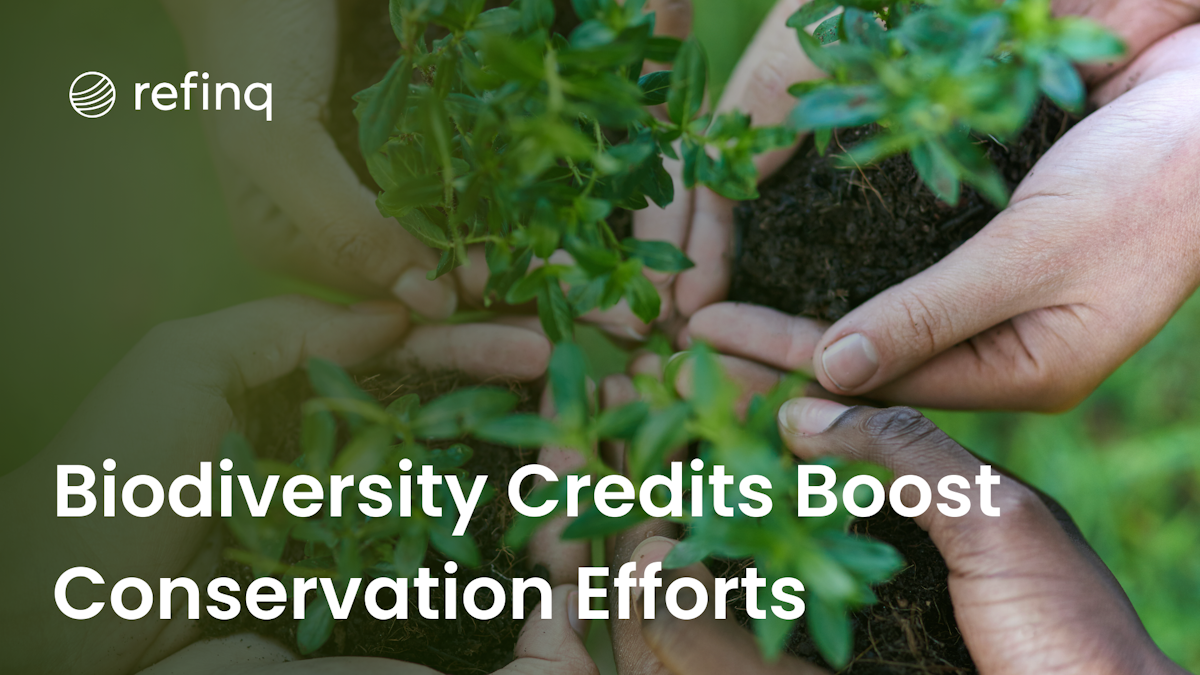How Biodiversity Credits Support Conservation

Biodiversity credits are emerging as a crucial mechanism to drive conservation efforts globally. These economic tools offer financial incentives for preserving and restoring ecosystems, enabling sustainable development while protecting biodiversity. According to Etifor, biodiversity credits promote activities like reforestation, wildlife habitat preservation, and ecosystem restoration. Their growing adoption signifies a significant step toward aligning economic activities with environmental conservation goals.
refinq, a leading SaaS platform, complements biodiversity credits by providing advanced risk assessments that help businesses evaluate and prioritize conservation projects. With its robust data analysis capabilities, refinq empowers companies to align their operations with sustainable practices while mitigating nature-related risks.
Understanding Biodiversity Credits
What Are Biodiversity Credits?
Biodiversity credits are tradable certificates that represent measurable positive actions taken to conserve biodiversity. These credits provide financial incentives for projects such as habitat restoration, species protection, and sustainable land management. WRI explains that biodiversity credits function similarly to carbon credits but focus on ecological preservation rather than carbon reduction.
How Do They Work?
Baseline Assessment: Developers evaluate the ecological baseline of an area, identifying opportunities for improvement.
Conservation Activities: Projects like planting native vegetation, rewilding areas, or creating wildlife corridors are implemented.
Measurement and Certification: Accredited organizations measure the impact, certify the biodiversity gains, and issue credits.
These credits can then be purchased by companies or governments aiming to meet sustainability goals or offset their ecological footprints.
What Types of Projects Are Funded Through Biodiversity Credits?
Biodiversity credits fund a range of initiatives, including:
Reforestation Programs
Projects that restore native forests to enhance carbon capture and provide habitats for endangered species. Examples include tropical reforestation in areas like the Amazon Basin.Wildlife Habitat Protection
Initiatives focused on preserving critical habitats for threatened or endangered species, such as protecting wetlands for migratory birds (Nature Conservancy).Coral Reef Restoration
Marine-based conservation efforts that rebuild coral reefs, crucial for biodiversity and coastal protection.Sustainable Agriculture and Land Use
Projects promoting biodiversity-friendly farming practices, reducing soil degradation, and protecting pollinators (Think Landscape).
Benefits of Biodiversity Credits
Driving Conservation Efforts
Biodiversity credits channel funding toward conservation activities that would otherwise lack financial support. For instance, the Nature Conservancy highlights how biodiversity credits have funded projects that restored wetlands and protected endangered species.
Incentivizing Sustainable Development
By incorporating biodiversity credits into development projects, companies can minimize environmental impacts while ensuring compliance with regulations such as the Taskforce on Nature-related Financial Disclosures (TNFD).
Applications of Biodiversity Credits
Corporate Sustainability
Corporations use biodiversity credits to achieve their sustainability targets, offsetting their ecological impacts. This approach is particularly valuable for industries like agriculture, energy, and construction.
Regional Conservation Programs
Countries like Colombia have pioneered biodiversity credit systems, with the first voluntary methodology approved to incentivize local conservation efforts (Etifor).
Where Are Biodiversity Credit Schemes Making the Biggest Difference Globally?
Colombia’s Voluntary Biodiversity Credit Scheme
Colombia has been at the forefront with the first approved voluntary biodiversity credit methodology, focusing on preserving its rich tropical biodiversity (Etifor).Africa’s Savannah Projects
Numerous initiatives in Africa use biodiversity credits to restore degraded savannas, preserving unique ecosystems and species like elephants and rhinos.Asia-Pacific Marine Ecosystem Restoration
In regions like the Coral Triangle, biodiversity credits are funding efforts to rebuild coral reefs, crucial for marine biodiversity and local fisheries.European Farmland Biodiversity
Biodiversity credits in Europe are improving hedgerows and creating wildlife corridors, critical for biodiversity in agricultural landscapes (Nature.org).
refinq’s Role in Supporting Biodiversity Credits
As the adoption of biodiversity credits grows, refinq plays a pivotal role in supporting businesses and organizations through:
Comprehensive Risk Assessments: refinq provides granular data on biodiversity risks, enabling companies to identify areas where conservation efforts would yield the highest impact.
Alignment With Regulatory Frameworks: refinq ensures compliance with global standards like CSRD and ESRS, streamlining the integration of biodiversity credits into corporate strategies.
Real-Time Monitoring: Through its advanced analytics platform, refinq allows companies to track the progress and outcomes of their conservation projects, ensuring transparency and accountability.
refinq’s solutions align seamlessly with biodiversity credit methodologies, enabling companies to make data-driven decisions that benefit both their operations and the environment.
Conclusion
Biodiversity credits are revolutionizing the way conservation efforts are financed and executed. By connecting economic incentives with environmental goals, these credits pave the way for sustainable development and ecological restoration. Tools like refinq further enhance these efforts by providing detailed risk assessments, ensuring regulatory compliance, and promoting effective conservation strategies.
Relevant Links
Biodiversity Credits and Their Importance (The Nature Conservancy)
The Role of Biodiversity Credits (The Conservation Foundation)
What Are Biodiversity Credits and How Do They Work? (Global Landscapes Forum)